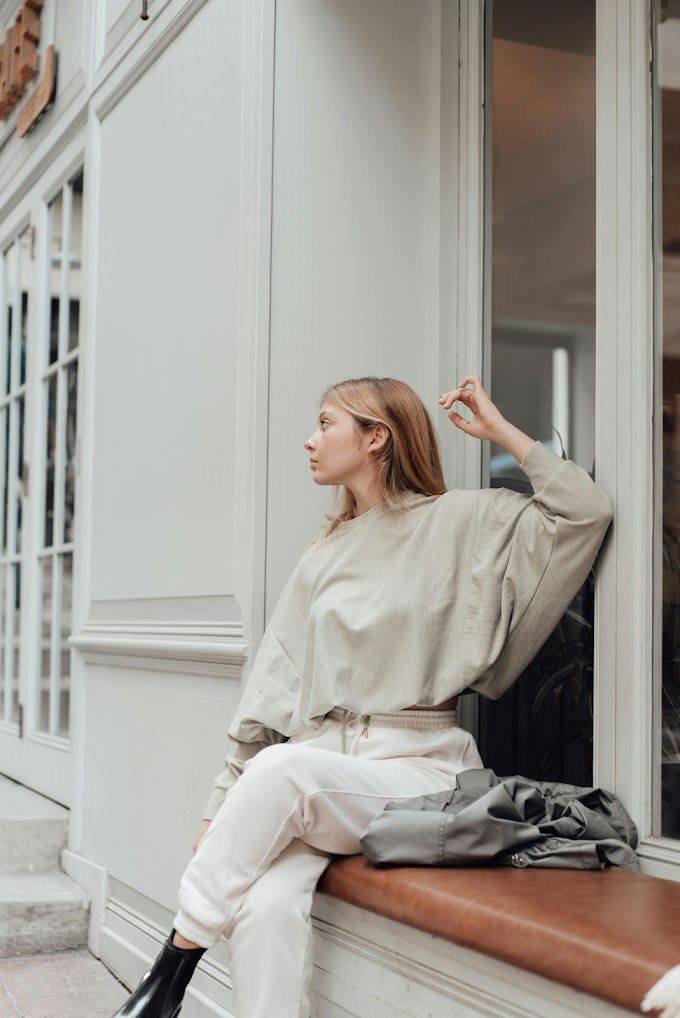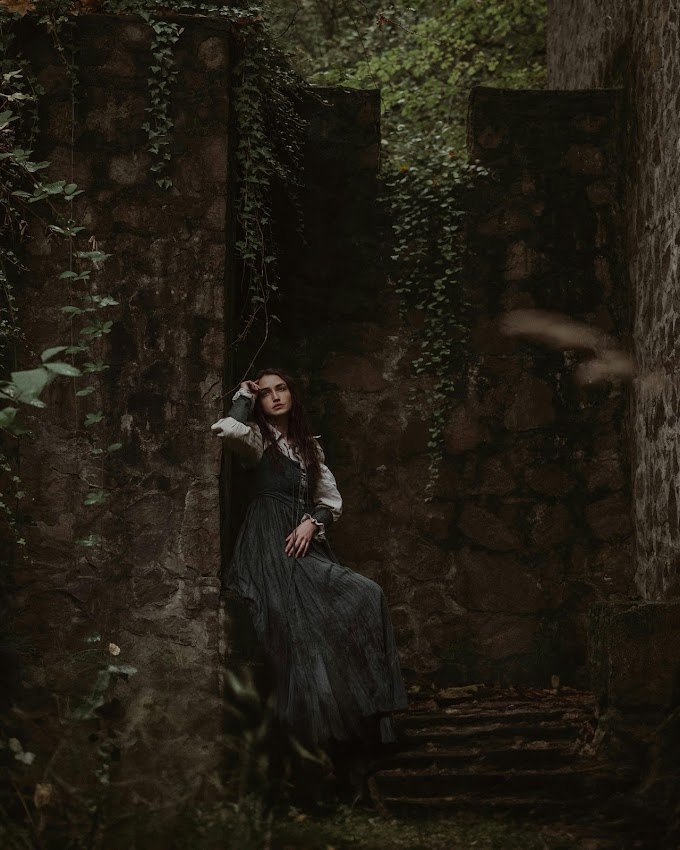Bohemian Styles of the 1970s: The Free-Spirited Fashion Revolution
The 1970s were 10 years of progress and experimentation in plan, put aside by the climb of various styles and advancements. Among these, the bohemian or "boho" style emerged as a specific and powerful style. Laid out in a blend of imaginative, social, and political effects, bohemian styles of the 1970s reflected a desire for a valuable open door, self-verbalization, and a break from standard guidelines. This article plunges into the starting points, describing characteristics, social impact, and persevering through custom of 1970s bohemian style, researching how it became indivisible from an extraordinary lifestyle and continues to rouse contemporary design.The 1970s were 10 years of progress and experimentation in plan, put aside by the rising of various styles and improvements. Among these, the bohemian or "boho" style emerged as a specific and powerful style. Laid out in a blend of imaginative, social, and political effects, bohemian styles of the 1970s reflected a desire for a valuable open door, self-verbalization, and a break from standard guidelines. This article plunges into the starting points, describing characteristics, social impact, and getting through custom of 1970s bohemian style, exploring how it became indivisible from a remarkable lifestyle and continues to propel contemporary plan.
Origins of Bohemian Style in the 1970s
1. Historical and Cultural Influences
The maxim "bohemian" at first implied a lifestyle related with creative and fanciful individuals, often living in poverty or in elective organizations. Its establishments can be followed back to the Romani public, who were for the most part suggested as "Bohemians" due to their obvious beginning stages in the Bohemia region of the Czech Republic. The bohemian lifestyle, portrayed by its complement on creative mind, obstruction, and an excusal of regular social guidelines, transformed into a wellspring of inspiration for the 1970s boho style.
During the 1960s, the individuality advancement, including the extreme turn of events, laid the reason for the bohemian styles of the 1970s. The mavericks' complement on congruity, love, and a relationship with nature influenced the boho sharp, which embraced near principles anyway with a more cleaned and shifted breeze. The 1970s bohemian style united parts of this maverick advancement with influences from various valid periods, social orders, and creative turns of events.
2. Influence of Iconic Figures
A couple of enticing figures expected a basic part in advancing the bohemian style of the 1970s. One of the most prominent was the style maker and socialite Diane von Furstenberg, whose wrap dresses transformed into a staple of the boho storeroom. Von Furstenberg's arrangements, depicted by their effortlessness of wear and energetic prints, embodied the interesting and simple nature of bohemian style.
Another key figure was craftsman artist Stevie Scratches of Fleetwood Mac, whose ethereal and sincere style became indivisible from bohemian plan. Scratches' renowned looks, including streaming maxi dresses, layered skirts, and shrouds, affected multitudinous lovers and set the boho sharp as a picture of both style and freedom.
Key Characteristics of 1970s Bohemian Style
1. Flowing Silhouettes
An outstanding feature of the bohemian style in the 1970s was that it revolved around soft, easy shapes. This was a radical shift from the past decades more structured and fitted looks. Bohemian dressing embraced garments with generous cuts with a goal of comfort and freedom. Basic items of boho chic style were maxi dresses, peasant tops, and slouchy pants, all of which favored simplicity and modest grace.
In the particular case of maxi dresses, these showcased an even more bohemian approach in 1970s fashion. These always elongating dresses frequently possessed extensive patterns, frills and skirt tiers that only helped provide a dreamy, cute, and childlike effect. Its image defined that of a wonderful howardean dream with great jovial fun combined with sweet dress styles out to represent everything free spirit emphasizing the very way of life at the core of any other bohemian lifestyle.
2. Eclectic Patterns and Textures
Bohemian design of the 1970s was described by its diverse blend of examples and surfaces. This way to deal with configuration was propelled by different social and imaginative impacts, including society workmanship, ethnic materials, and classic styles. The blend of various examples, like paisleys, florals, and mathematical plans, made an outwardly rich and dynamic tasteful.
Materials utilized in bohemian design were similarly different, going from lightweight cottons and flowy chiffons to heavier velvets and corduroys. The utilization of regular strands and hand tailored procedures added to the legitimacy and uniqueness of the boho look. Weaving, beadwork, and periphery were normal embellishments, adding a hint of distinctive craftsmanship to pieces of clothing.
3. Natural and Earthy Color Palettes
The variety range of 1970s bohemian style was propelled commonly and the gritty tones of the normal world. Warm, muffled colors like earthenware, ochre, olive green, and consumed sienna overwhelmed the boho closet. These varieties were frequently joined with rich gem tones and energetic accents to make an outwardly engaging and agreeable look.
Notwithstanding gritty tones, the boho style likewise embraced a scope of normal tints roused by materials and colors from different societies. The utilization of normal and natural varieties mirrored the bohemian ethos of interfacing with nature and praising the magnificence of the regular world.
4. Layering and Accessorizing
Layering was one major hairstyle technique used to achieve the bohemian look, whereby one was able to combine parts of make an outstanding and redid style. Such a boho wardrobe invariably featured multiple extra layers, for example a long skirt worn over trousers, a vest worn over a sweatshirt, and sometimes even a wrap over a dress. This layering strategy, however, also underscored more complex ideas in clothes, such as the concept of unfussy, elegant styling.
The bohemian style required lace to complete the entire look. Pretty slouchy over coats with wide brims, floppy felt hats, and headpieces with crest or beads were among the popular options. Pearls was usually eye-catching and variegated which included big statement couture, jewelry stacked in layers many women wore stacked on arms . The use of high-cost and modern presented extra details of the bohemian chic which was imaginative and non-conformity.
5. Ethnic and Folk Influences
The 1970s bohemian style was vigorously impacted by ethnic and society components, consolidating plans and strategies from different societies all over the planet. This impact was reflected in the utilization of customary materials, prints, and themes, like Mexican weaving, Indian paisleys, and African prints.
These ethnic impacts were frequently joined with present day plan components, making a combination of styles that was both varied and contemporary. The joining of worldwide impacts into bohemian design mirrored the period's interest with social variety and investigation.
Cultural Impact of Bohemian Style
1. Counterculture and Self-Expression
The peculiar subculture called Bohemianism in the world of fashion in the 1970s, seemed to be deeply connected to the evolution of nonconformism that had the positive aspects of freedom, inner self, and defiance. The boho style allowed people to express themselves and break stereotypical design approaches. It was the celebration of individuality and the rejection of the practicality and rigidity of the last several decades.
This same stylistic edge was also associated with the broader change in society’s direction towards more self-expressionism and creativity. The decade of the 1970s was marked by the increasing bold creative integrations; in the field of music, art, literature, all have embodied the spirit of the time. Yet, the bohemian trend in interior design developed as a social evolution, in which the values of freedom, creativity, and authenticity were the leading ones.
2. Influence on Music and Pop Culture
Music, as well as mainstream culture, were all influenced by the trends of the bohemian culture that was evolving in the 1970s. Musicians and artists of the time adopted the boho style and rather incorporated it on stage and at events. The images on the covers of their records captured the pretty interesting personas of the American pop image: Stippy Scratches, Jane Joplin, David Bowie, who became part of the Bohemian active movement, affecting their audience as well as the overall culture.
Conscious events such as Woodstock and the Monterey Pop Festival also played a key role in the development of the boho style. These events celebrated the uniqueness and mix of these moments in history when in attendance; everybody had a boho fashion on, only this time it was alive and on the go. The movement contributed to the place trend started in popular culture through its engagement between music and fashion psychology in the bohemian movement.
3. Art and Design Influence
The bohemian style furthermore influenced the universes of craftsmanship and plan, with its emphasis on innovativeness and uniqueness. The different mix of models, surfaces, and assortments found in bohemian style jazzed up specialists and makers to examine new and uncommon ways of managing their work.
In inside plan, the bohemian elegant changed over into a warmth for fluctuated and layered elaborate design. Homes and studios were charged up with a mix of unique enrichments, ethnic materials, and hand customized makes, reflecting a comparable sensation of chance and creative mind found in bohemian plan. The effect of bohemian style can anyway be tracked down in contemporary inside plan, where the blended and modified approach stays popular.
Legacy and Revival of 1970s Bohemian Style
1. Enduring Popularity and Influence
The bohemian style of the 1970s has continued to influence style and plan long after the decade wrapped up. The highlight on peculiarity, creative mind, and self-explanation stays significant in contemporary style, with the boho look in many cases getting ready for action in various designs.
Current interpretations of bohemian plan habitually draw on the crucial parts of the 1970s style, such as streaming layouts, blended models, and customary assortment ranges. Organizers and style brands continue to coordinate bohemian effects into their collections, reflecting the helping through charm of the boho elegant.
2. Bohemian Style in Contemporary Fashion
As of late, there has been a resurgence of interest in bohemian style, with contemporary planners returning to the styles and patterns of the 1970s. The boho look has been adjusted to suit present day preferences, with refreshed outlines, textures, and plans that reflect current style sensibilities.
The fame of bohemian style should be visible in different style, including the ascent of classic propelled clothing, the proceeded with utilization of regular and economical materials, and the hug of diverse and customized frill. The bohemian tasteful remaining parts a well known decision for those looking for an exceptional and individualistic way to deal with design.
3. Influence on Lifestyle and Culture
The bohemian style of the 1970s lastingly affects way of life and culture. The standards of opportunity, imagination, and self-articulation that characterized the boho development keep on resounding with people looking to embrace a more loose and credible lifestyle.
Notwithstanding style, the bohemian ethos should be visible in different parts of contemporary culture, including workmanship, music, and plan. The festival of uniqueness, the enthusiasm for different social impacts, and the craving for a more significant and associated approach to everyday life stay key to the bohemian way of life.
Conclusion
The bohemian styles of the 1970s present a vibrant and bold perspective in design history, characterized by their emphasis on individuality, creativity, and self-expression. Emerging from a rich tapestry of cultural, artistic, and social influences, the boho aesthetic defined an era and left a lasting impact on design and culture.
With flowing patterns and eclectic combinations of natural materials and intricate decorations, the bohemian style of the 1970s continues to inspire and captivate. Its enduring legacy showcases the ability of design to reflect and shape contemporary social and cultural trends. As we reflect on the bohemian design of the 1970s, we celebrate not only its remarkable achievements but also its role in encouraging personal expression, imagination, and authenticity that remain vital today.








